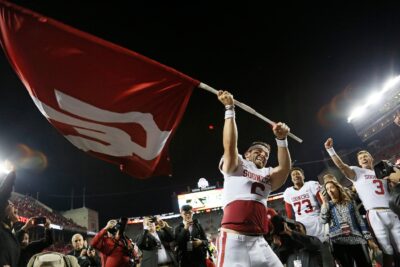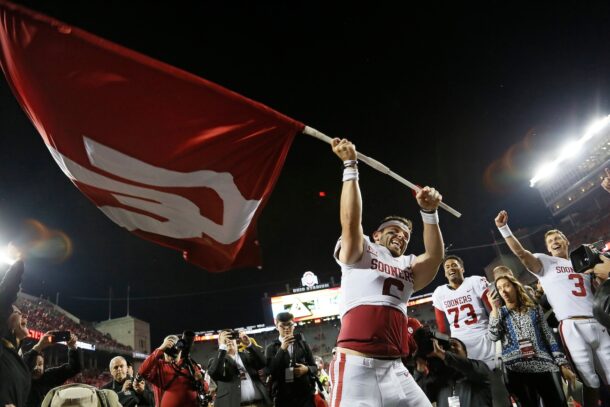Alabama basketball season preview: New coach, new direction, same challenge: Is Alabama finally serious about hoops?
By Al Blanton
Published:
A sickness has infected the Alabama basketball program for the past 15 years. There isn’t a clinical name for it, but there ought to be. It’s a condition called “Mediocrity Toleration,” and Alabama seems to have a serious case of it. That is, until now.
After the 2018-19 version of the Crimson Tide walked off of the court at Coleman Coliseum, having lost in the first round of the NIT against no-name Norfolk State, one got the sense that the era of averageness was coming to an end. The program and its coach Avery Johnson decided to mutually part ways, and Athletic Director Greg Byrne went out and made a surprise hire in 43-year-old Nate Oats from the University of Buffalo. Byrne’s decision stirred discussion among many fans, principally because the first reaction after hearing the announcement was to type in “Nate Oats” into a Google search bar.
Nate who?
With the hire, Byrne bucked the conference trend of snagging the big fish trying to catch a second wind (see Rick Barnes, Bruce Pearl and Ben Howland), in favor of the rising star. In doing so, he has gone with a higher-risk, higher-reward scenario that he hopes will pay dividends in the coming years.
And while the name might not resonate, perhaps a shock to the system will. Since arriving in Tuscaloosa, Oats has systematically instituted a change of culture — “Draining the Swamp,” if you will, of any notions that this is a program that is going to stand for averageness any longer.
But Oats won’t do it with a brow-beating, Bobby-Knightesque approach to basketball; his approach to building a winning program at Alabama begins with the belief that playing basketball ought to be fun, a foundational principle the players in crimson seem to have forgotten along the way.
“We wanted to get that culture back where they actually enjoyed playing basketball again,” Oats recently said at SEC Media Days.
Truth is, mediocrity is a plague that cycles and recycles, and the ups and downs of playing basketball at Alabama have taken a toll on the players and the program as a whole. The only thing rolling in Tuscaloosa recently has been inconsistency, and every year the narrative seems to be “which Alabama team is going to show up tonight?” Fans have come to expect rain: bad performances and conference road losses in January and February.
Oats has been tasked to break these strongholds, and he knows what he has to do. Philosophically, he believes stretches of unpredictability have to do with everyday habits, and consistent effort won’t be accomplished in games unless it’s demanded in practice. The players seem to be buying in, and there’s a general feeling that this program is on the upswing.
But who is Nate Oats? A graduate of Maranatha Baptist in Watertown, Wisconsin, Oats was hired as an assistant to Bobby Hurley at Buffalo in 2013 before being promoted to head coach when Hurley took the same job at Arizona State 2 years later. Oats led the Bulls to consecutive Mid-American Conference (MAC) championships, 3 NCAA Tournament berths and a 96-43 record. Previous to his stint at Buffalo, Oats won a state title at Romulus High School in Michigan and was an assistant at Division III Wisconsin-Whitewater. His résumé is nothing to sneeze at, but it won’t help him beat Kentucky.
Last year, he led his team to a 32-4 season, punctuated by an upset of Hurley and Arizona State in the opening round of the NCAA tournament, and the year before that the Bulls became tourney giant-killers with a double-digit win over 4-seed Arizona. Which is the real kicker: He’s singlehandedly had more tournament success in the past 4 years than Alabama has had in the past 15. More on that in a jiffy.
On paper and throughout his profession, Oats has a reputation of being a good coach. But because he’s established a blueprint for success in Northern states (Wisconsin, New York and Michigan), one must necessarily wonder if he’ll be geographically challenged at Alabama. Perhaps Oats has what it takes no matter his location.
Oats inherits a program that has been to the NCAA Tournament twice in 13 — count ’em— 13 years. Sure, there were numerous NIT bids peppered throughout those seasons, but no one has been truly impressed with the brand of basketball Alabama has put on the floor since Mark Gottfried roamed the sidelines in the mid-2000s.
In Tuscaloosa, one cannot talk Alabama basketball without the juxtaposition of Alabama football, and my, what success that program has had. On the other hand, Alabama basketball has become a squatter on the real estate known as the “bubble” — a place somewhere between the Big Dance and the Land of Lost Dreams. And when it did hop on the Road to the Final Four, it veered off the exit ramp quickly — losing to 9-seed Creighton in the 1st round in 2011-12 and to 1-seed Villanova in the 2nd round in 2017-18.
Ultimately, the program’s woes can be tied to an inability to recruit big-time talent, the inability to locate a bona fide shooter, and the inability to score at a high level. The Anthony Grant and Avery Johnson eras, virtual facsimiles in many regards, were branded by consistently good defenses and offenses that struggled to find an efficient identity. Last year, Alabama ranked 188th in the country in scoring offense; in 2017-18, 217th; in 2016-17, 284th, and in 2015-16, 309th. It should be noted that the last time Alabama was ranked in the top 100 in scoring offense was the 2008-09 season when it averaged 73.4 points per game under Gottfried.
But it all goes back to recruiting. Back to many-starred Jimmys and blue-chip Joes, and Alabama’s ineptitude at luring them. Since Gottfried left, Crimson Tide players have been notoriously absent from the Round 1 of the NBA Draft, as only Collin Sexton has been selected in that round in the past 15 years. Except in rare instances, McDonald’s All-Americans do not announce “Alabama” as their college of choice, and the program has been virtually ineffective in walling off its own state to prevent the exodus of elite recruits (Trendon Watford, Joshua Langford, Eric Bledsoe, DeMarcus Cousins) to places like Kentucky, Indiana and Michigan State.
Although this program no longer exudes hardcourt success, it’s one that flexes some historic muscle. Consider that Alabama has captured 7 SEC tournament championships (3 in a row from 1989-91), 8 SEC regular season championships and made the Sweet 16 on 8 occasions. The architects of this basketball program, C.M. Newton and Wimp Sanderson, combined for 15 20-win seasons and 12 NCAA Tournament appearances. Alabama last made some noise in 2003-04 when Gottfried ushered the Crimson Tide to the Regional Final, but after that the program disappeared from national discussion.
Since Gottfried, only 2 coaches, Grant and Johnson, have come and gone, but neither managed to exorcise the tournament demons. Across 6 seasons, Grant was 117-85 overall (54-49 conference) but only made the NCAA Tournament once. Johnson was 75-62 overall (34-38 conference) and settled for the NIT in 3 out of his 4 seasons.
Oats has the luxury of 3 major contributors returning for the 2019-20 season: Kira Lewis Jr. (13.5 ppg), John Petty (10.2 ppg) and Herb Jones (6.4 ppg). Complementing these returnees are 7 offseason additions: true freshmen Juwan Gary, Jaylen Forbes, Raymond Hawkins and Jaden Shackleford; and transfers James “Beetle” Bolden, Jahvon Quinerly and James Rojas.
Bolden comes to Alabama as a graduate transfer. Last year, he was a major contributor for Bob Huggins’ West Virginia Mountaineers, averaging 12.2 points per game. Quinerly is a former McDonald’s All-American who played sparingly at Villanova, and Rojas was a JUCO All-American out of Hutchinson Community College (Kansas).
The team has already faced early obstacles that could change the complexion of the team: injuries to Rojas and Gary set in motion a game of musical chairs on Oats’ roster, and the team continues to wait patiently while the NCAA makes up its mind on Quinerly’s eligibility for the 2019-20 season.
Guard-heavy in its roster, expect the Crimson Tide to play small and fast. Expect Alabama to look differently than it has in years. And expect to see less of the big swings in overall effort, characteristic of last year’s squad.
So as we approach the beginning of the Nate Oats era in Tuscaloosa, questions abound:
Can he displace the culture of averageness in Tuscaloosa and win at the elite level?
Can he carve out a niche in a state where Bruce Pearl coaches?
Can he establish recruiting inroads in the South?
Can he get this team to believe in itself?
Gazing across the college sports landscape for the past 2 decades, one will discover an interesting trend: The rise of programs that have not had great historical success. Virginia basketball, Florida basketball, Vanderbilt baseball, Oregon football and TCU football are all examples of programs that have found nascent success with little or no historical backing. The common denominator of all of these teams?
A great coach.
Is Nate Oats that guy for Alabama?
Hopefully Alabama has had more mediocrity than it can tolerate and will demand a good product be put on the floor. If Florida, a team that, historically, had a mediocre basketball tradition can win back-to-back national titles, why can’t Alabama send a team to the Final Four? Auburn did it. George Mason did it. Butler did it. Texas Tech did it. Wichita State did it. Heck, even Loyola-Chicago did it.
Which means the only question the Alabama team ought to be asking is, “Why not us?”
Al Blanton is the owner of Blanton Media Group, publishers of 78 Magazine and Hall & Arena.







